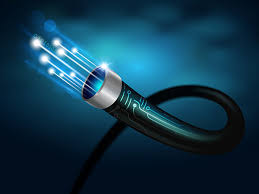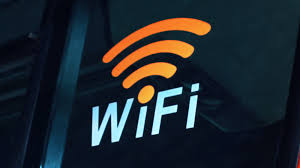- [email protected]
- Monday-Saturday 9:00 - 17:00
Understanding Internet Speeds in Australia: A Guide for Small Businesses

What is Copilot PC?
05/02/2025
Upgrading to Fibre: How NBN and the Government Are Improving Internet Access
05/03/2025In Australia, internet speed and reliability are crucial for small businesses to operate efficiently. The National Broadband Network (NBN) provides various connection types, each with different speeds and performance levels. This article explores the main NBN technologies, as well as alternative options like Starlink and 5G Mobile Broadband, to help businesses choose the best internet solution.
Why Fibre is the Fastest?
Fibre-optic internet transmits data using light signals through thin strands of glass or plastic. Unlike traditional copper cables, fibre has minimal signal loss over distance, enabling faster and more consistent speeds. In contrast, copper-based technologies experience greater resistance and signal degradation, meaning that the farther data travels, the slower and less reliable the connection becomes.
Comparison of NBN Technologies
1. Fibre to the Premises (FTTP) – The Gold Standard
FTTP delivers fibre-optic cables directly to homes and businesses, offering the highest possible speeds (up to 1000 Mbps). Since fibre does not degrade over distance, users receive near-symmetrical upload and download speeds, making it ideal for businesses needing high-speed, reliable internet.
2. Fibre to the Curb (FTTC) – A Middle Ground
FTTC extends fibre to a small distribution point near premises, typically within a few hundred meters, before using existing copper phone lines to complete the connection. This results in better speeds (up to 250 Mbps) than Fibre to the Node but is still limited by the final copper segment.
3. Fibre to the Node (FTTN) – Distance Matters
FTTN connects fibre to a neighborhood node, with copper wires covering the remaining distance to homes and businesses. Performance depends on the distance from the node, with speeds typically ranging from 25 to 100 Mbps. The longer the copper connection, the greater the speed loss.
4. Hybrid Fibre Coaxial (HFC) – Cable Broadband
HFC repurposes existing pay-TV coaxial cables to provide internet. It offers good speeds (up to 1000 Mbps in some cases), but performance can be affected by network congestion and infrastructure quality.
Internet for Rural and Remote Areas
Fixed Wireless NBN
For regional and rural areas, NBN provides Fixed Wireless, where signals are transmitted from a nearby tower to a rooftop antenna. Speeds are typically between 25 and 75 Mbps but can be impacted by weather, congestion, and distance from the tower.
NBN Satellite (Sky Muster)
In remote areas, NBN uses satellite technology to provide internet access. Speeds range from 12 to 100 Mbps, but latency (the delay in data transmission) is high due to the long distance signals travel to geostationary satellites (about 36,000 km above Earth).
Starlink – A Faster Alternative to NBN Satellite
Starlink, operated by SpaceX, is an alternative to NBN satellite. It uses a network of low Earth orbit (LEO) satellites positioned about 550 km above Earth, significantly reducing latency. Starlink offers speeds between 50 to 250 Mbps with much lower lag, making it a superior option for businesses in remote areas needing high-speed connectivity.
Mobile Broadband – 5G as an Alternative
Some carriers offer 5G mobile broadband as an alternative to fixed-line connections. This can be a viable option for businesses, especially in areas where high-speed fibre is not yet available.
Advantages of 5G Mobile Broadband
- High Speeds: In some areas, 5G can match or exceed the speeds of fixed-line connections, reaching up to 1 Gbps.
- No Fixed Infrastructure Required: Unlike NBN, 5G does not require a physical connection to a property, making installation quick and flexible.
- Portability: Businesses can move their connection between locations as long as there is 5G coverage.
- Good Backup Option: 5G can serve as a redundancy option in case of fixed-line outages.
Disadvantages of 5G Mobile Broadband
- Network Congestion: Speeds can vary significantly based on the number of users in an area.
- Coverage Limitations: 5G is still being rolled out, and coverage is primarily focused on metropolitan areas.
- Data Caps: Many mobile broadband plans have data limits, which can make them expensive for businesses with high data usage.
- Latency Variability: Although 5G is fast, latency can fluctuate more than with fibre, which may impact applications like video conferencing and gaming.
Technology vs. Speed and Cost Comparison
| Technology | Typical Speed Range | Estimated Cost Range (AUD) |
| FTTP | 100 – 1000 Mbps | $80 – $150+ per month |
| FTTC | 50 – 250 Mbps | $70 – $120 per month |
| FTTN | 25 – 100 Mbps | $60 – $100 per month |
| HFC | 50 – 1000 Mbps | $70 – $150+ per month |
| Fixed Wireless | 25 – 75 Mbps | $60 – $100 per month |
| NBN Satellite | 12 – 100 Mbps | $50 – $100 per month |
| Starlink | 50 – 250 Mbps | $139 – $159 per month |
| 5G Mobile Broadband | 50 – 1000 Mbps | $70 – $150 per month |
Choosing the Right Connection for Your Business
For small businesses in metropolitan areas, FTTP or HFC are the best options for high-speed and reliable connectivity. Businesses in regional areas should consider Fixed Wireless, while those in remote locations may benefit from Starlink over traditional NBN Satellite due to its superior performance. Mobile broadband, particularly 5G, also provides a flexible and portable solution for businesses needing connectivity in multiple locations.
By understanding these internet technologies, small businesses can make informed decisions to ensure seamless operations, better productivity, and improved customer experience.





